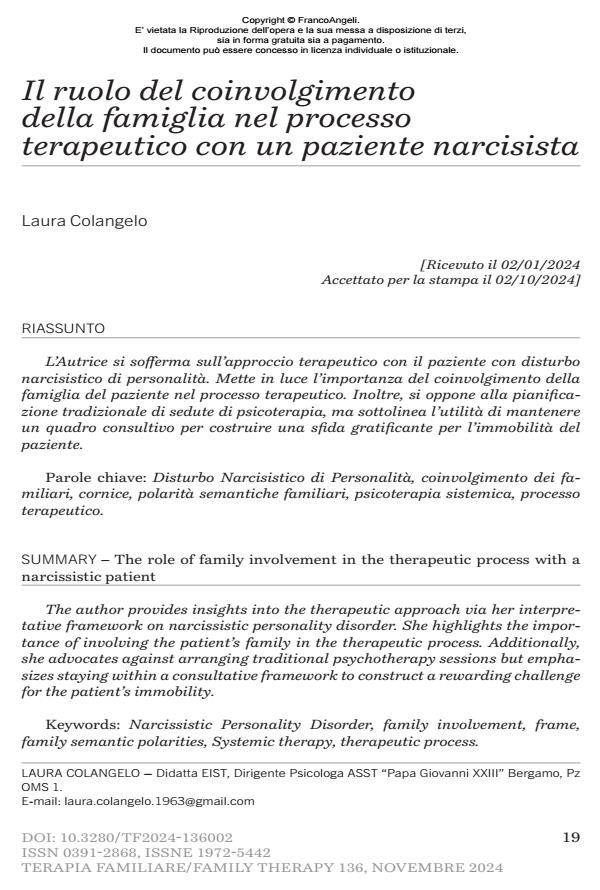The role of family involvement in the therapeutic process with a narcissistic patient
Journal title TERAPIA FAMILIARE
Author/s Laura Colangelo
Publishing Year 2025 Issue 2024/136
Language Italian Pages 19 P. 19-37 File size 1207 KB
DOI 10.3280/TF2024-136002
DOI is like a bar code for intellectual property: to have more infomation
click here
Below, you can see the article first page
If you want to buy this article in PDF format, you can do it, following the instructions to buy download credits

FrancoAngeli is member of Publishers International Linking Association, Inc (PILA), a not-for-profit association which run the CrossRef service enabling links to and from online scholarly content.
The author provides insights into the therapeutic approach via her interpretative framework on narcissistic personality disorder. She highlights the importance of involving the patient’s family in the therapeutic process. Additionally, she advocates against arranging traditional psychotherapy sessions but emphasizes staying within a consultative framework to construct a rewarding challenge for the patient’s immobility.
Keywords: Narcissistic Personality Disorder, family involvement, frame, family semantic polarities, Systemic therapy, therapeutic process.
Laura Colangelo, Il ruolo del coinvolgimento della famiglia nel processo terapeutico con un paziente narcisista in "TERAPIA FAMILIARE" 136/2024, pp 19-37, DOI: 10.3280/TF2024-136002